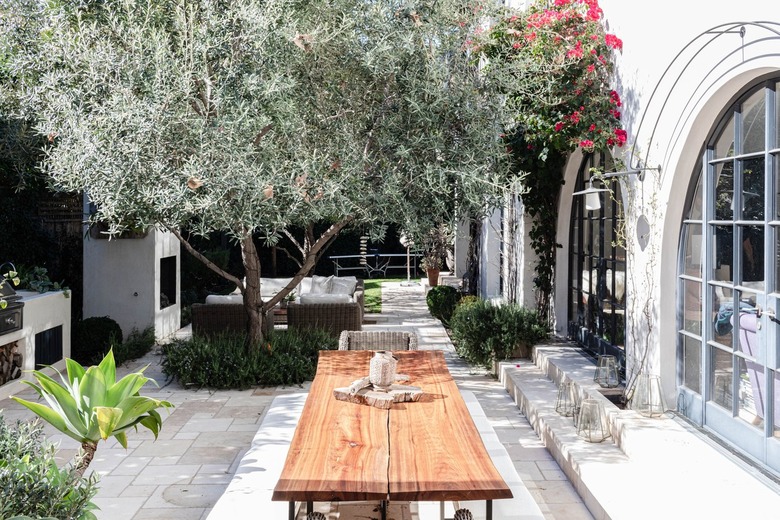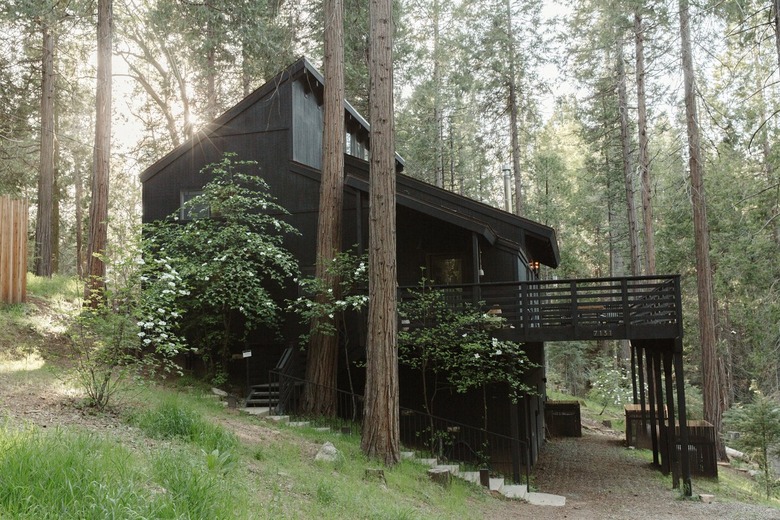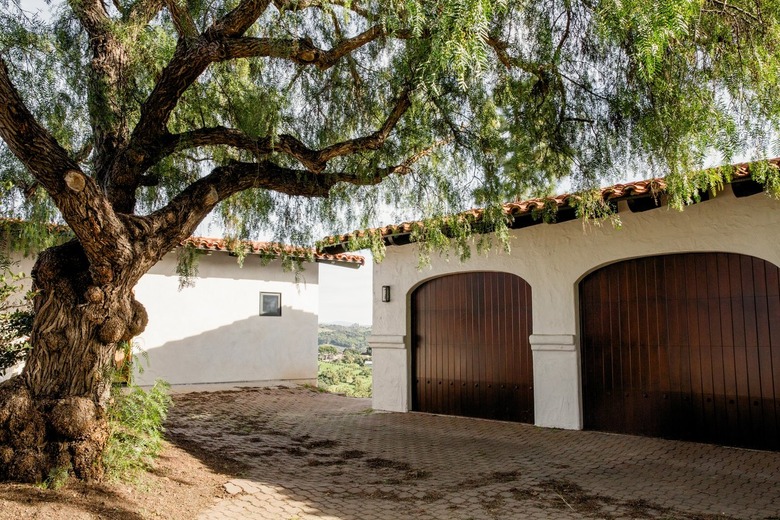How (And When) To Hire An Arborist
A storm blows through your town, taking down several of your neighbor's trees and in your yard, tearing off a large branch from an old oak tree. Immediate and proper tree care is required. You think it may be time to remove the entire tree since it could possibly be a danger to the house, but the entire family protests. It's time to call in an arborist.
An arborist is a tree professional who is trained to evaluate a damaged tree and appropriately care for it as well as handle other tree issues. An arborist can answer your family's questions about the damage to the oak and then take the required action to handle the situation safely. If the tree must be removed, the arborist can also offer advice about replacement and can even handle the planting.
Ready to hire a professional arborist? Here's everything you need to know about what they do — and most importantly, how much this tree service will cost.
What an Arborist Does
What an Arborist Does
An arborist is a trained tree expert. To be certified as an arborist, an individual must have training and experience in arboriculture, which is the science of caring for trees. Though regular tree maintenance may not require an arborist, when issues or questions arise or when training an old tree or pruning a young one seems too difficult or complicated to do yourself, an arborist is the authority to call.
An arborist is qualified to undertake the more complex aspects of tree care. These include:
- Planting trees: An arborist can evaluate a planting site and determine what kind of tree would thrive there. They can also undertake the planting for you and take care of the young tree until it is established.
- Pruning trees: Trimming a tree properly is not a matter of snipping here and there or topping the tree. There is more than one pruning technique but only one best manner in which to prune a particular tree, which depends on the species, maturity, condition, and placement. An arborist has the knowledge to evaluate the tree and select the optimal type of pruning and the best time for it. Their expertise includes doing the pruning.
- Other tree maintenance: While it's nice to think that planting a tree is a one and done experience, that is never the case with a living organism. Trees, like pets, require regular care and maintenance. This is especially true in areas with harsh winter climates where preventative care before winter and a damage assessment after are necessary.
- Emergency tree care: Trees can get damaged in storms or high winds and require immediate help. An arborist knows how to evaluate the tree's condition and either remove it or trim damaged branches to lessen damage to the tree
and potential damage to the surrounding property. Arborists also remove stumps for homeowners.
When to Hire an Arborist
When to Hire an Arborist
Just because you have questions about what type of tree to plant doesn't mean you should rush out and hire an arborist. Arborists are professionals, and their services are not cheap. It is useful to learn about your hardiness zone, the trees that grow well in your area, and how to plant them on your own.
Consider bringing in an arborist when a tree needs help that you don't feel competent to provide. This can be removing a tree or emergency tree aid, but it might also be obtaining an evaluation of the health of your tree. If pruning involves a ladder and chainsaw, bring in an arborist. If the house or the tree are in danger from a tree's addition or placement, bring in an arborist.
Questions to Ask an Arborist Before Hiring
Questions to Ask an Arborist Before Hiring
Asking an arborist questions before signing on the dotted line is important to be sure you get the services and protection you need, and it's also a good way to get a sense of the person you are considering hiring. In addition to learning about qualifications and experience, you'll need information about certification and proof of insurance, the equipment provided, and whether debris cleanup is included in the bid.
Here are some questions you should consider asking before hiring:
- What is your experience in the field? You'll want to know where they were trained, how many years they have been working in the tree care area, and where and when they received certifications.
- Have you encountered the same tree situation as the one I have? This is particularly important with pruning and trimming since an inexpert job can cause problems for a long time. Depending on the species and time of year, a bad pruning job can cause the tree to rapidly produce new growth where it is not desirable. Alternatively, inexpert pruning of an evergreen can remove foliage that the tree will never replace.
- Are you fully insured? This may be the most important issue to discuss, and a reputable professional will be happy to show you insurance documentation. Remember that if the arborist you hire doesn't
carry liability insurance, you may be financially responsible for any
injury or damage they cause. You'll also want to hire an arborist with workplace safety insurance that will cover
employees in case they get injured. The arborist should also carry unemployment insurance. - Are you certified? When it comes to certification, the International Society of Arboriculture (ISA) is the professional organization that certifies arborists, providing property owners with a source for finding trained and skilled tree care professionals. An ISA certified arborist will always have training about safety techniques and methods of tree care that will benefit
trees. The
American Society of Consulting Arborists (ASCA) certifies consulting arborists, who have additional training and experience. - What kind of equipment will you be using? If your work involves pruning trees, an arborist is likely to use either an aerial lift or a ladder or else climb the tree with safety harnesses. Find out which one they plans on using and ask why. Aerial lifts are essential if the tree's structural integrity is or may be compromised. If there is no room for an aerial lift, climbing is safer and preferable to ladders.
- What cleanup is involved? Some arborists may not include removal of all the tree debris from your yard in the bid, and getting the detritus removed can cost more than you might think.
The Cost of Hiring an Arborist
The Cost of Hiring an Arborist
It will come as no surprise that an arborist's cost will depend on the work to be accomplished. Generally, the services run from $375 to $1,500. A bill can be higher or lower depending on the difficulty of the task.
For example, a small trimming job for one small tree might cost $75, while cutting an overgrown 100-year-old oak tree could run you thousands. In general, tree trimming costs less than tree removal, and stump removal may run under $200.
Consulting arborists charge similarly for tree work. However, their specialty is preparing reports for an insurance company and litigation among other things. A typical report will cost $350, while a more detailed report and consultation could be $500.
Arborist Licensing and/or Certification
Arborist Licensing and/or Certification
Anyone can advertise services for tree trimming and removal. Some states require arborist licensing, while others do not. States that regulate the profession of an arborist do not all have the same requirements for licensure, and some require testing and education. In some of those states, it is possible to substitute the state exam with national certification through the ISA.
A trained, good arborist will usually be certified by either the ISA or the ASCA. To get ISA certification, arborists must have at least three years of experience in some aspect of tree care. Alternatively, they must hold a college degree in horticulture, forestry, landscape architecture, or urban forestry. Many certified arborists have both the experience and the degree. To get certified, they must pass the ISA exam covering all aspects of tree care.
A certified consulting arborist is like a regular certified arborist but with additional training and experience. Many consulting arborists are registered with the ASCA. The ASCA requires a consulting arborist to have at least five years of experience in arboriculture, a four-year degree in arboriculture or a related field, and a board-certified master arborist certification or at least 240 continuing education units. Members must earn at least 30 units every two years to be sure they keep abreast of tree techniques and information.


